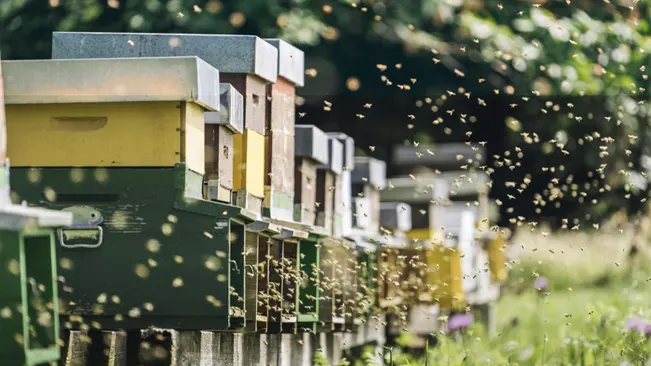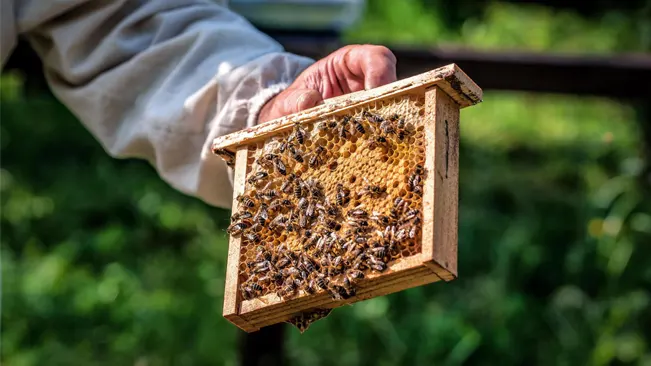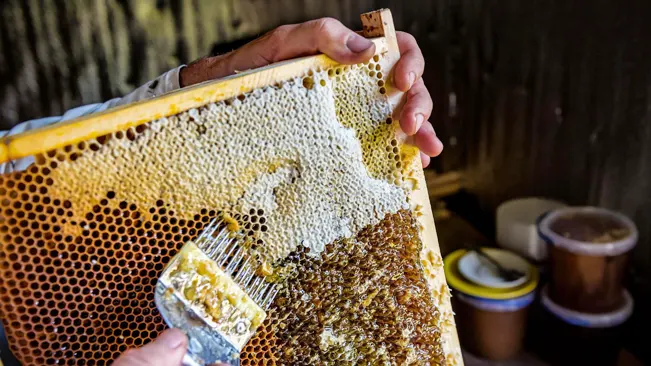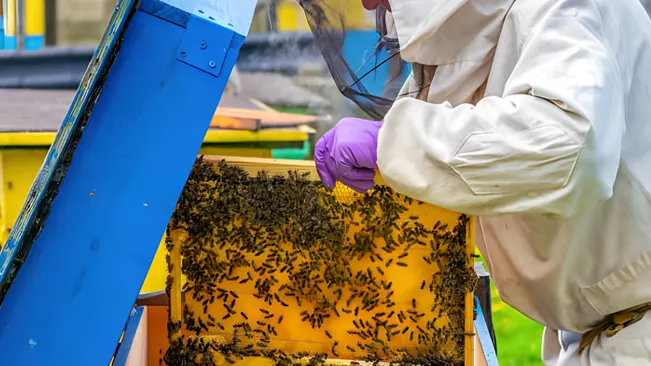Starting Your Bee Farm: A Beginner’s Guide to Beekeeping Basics
- February 5, 2024
- 1 comment
Beekeeping, a tradition steeped in history, dating back millennia, is experiencing a renaissance among both hobbyists drawn to the craft’s unique blend of nature and science, and environmental advocates recognizing the pivotal role bees play in sustaining biodiversity. This ancient practice, once integral to communities for its production of honey, beeswax, and other byproducts, now also stands at the forefront of efforts to combat the alarming decline in bee populations worldwide. The practice of beekeeping extends beyond the mere cultivation of honey; it serves as a vital cog in the ecological machine, facilitating the pollination of countless plant species, many of which constitute the backbone of our food supply.

For those intrigued by the prospect of donning the beekeeper’s veil, the journey from novice to seasoned apiarist is both enriching and accessible. With comprehensive guides and a supportive community at your disposal, embarking on the path to establishing your own bee farm is a venture within reach, promising not only the personal satisfaction of nurturing these essential creatures but also contributing to a larger, global environmental stewardship.
1. Choosing the Right Location
The foundation of a successful bee farm begins with selecting an optimal location. Ideal spots are rich in foraging opportunities, such as areas near gardens or wildflowers, to ensure bees have access to a diverse range of pollen and nectar sources. It’s crucial to consider the local climate since extreme weather conditions can impact bee health and productivity. Safety is paramount; the bee farm should be situated in an area that minimizes risk to people and animals while also being accessible for regular maintenance and inspections.
2. Gathering Equipment Essentials
Equipping yourself with the right tools and protective gear is essential for effective beekeeping. This includes a full beekeeping suit, gloves, and a veil to protect against stings, as well as a smoker and hive tool for hive management. The hive itself, composed of frames, boxes, and a base, serves as the central habitat for your bee colony, so ensuring its quality and suitability is key for the bees’ lifecycle and honey production.
3. Getting Your Bees
Establishing your bee colony can be achieved through two main avenues: package bees or nucleus colonies. Package bees offer a box full of worker bees along with a mated queen, making it a straightforward option for beginners to kickstart their beekeeping journey. Nucleus colonies, or “nucs,” provide a mini-hive with bees, a queen, brood, and honey, creating a more natural and less stressful transition for the bees into their new environment. The choice between these methods depends on your beekeeping experience, goals, and the specific dynamics of your apiary setup.

Regardless of the option selected, thorough preparation of your hive is paramount to ensure a seamless integration of the bees into their new home, fostering early establishment and growth. This involves having a well-assembled hive, prepped frames, and an ideally located site, all of which are crucial steps in laying a solid foundation for a flourishing bee colony and a rewarding beekeeping experience.
4. Practicing Hive Management Basics
Effective hive management hinges on consistent inspections to ensure the health of the colony, the productivity of the queen, and the early detection of pests or diseases. By understanding and proactively managing the hive’s dynamics, beekeepers can avert common issues, maintaining a healthy and productive environment for the bees. This involves monitoring for overcrowding, potential infestations, and ensuring the bees have sufficient resources, all of which are crucial for a thriving bee colony.
5. Harvesting Honey
Honey harvesting is a thoughtful process that blends the careful extraction of honey with maintaining the hive’s health. Beekeepers select frames filled with ready-to-harvest honey, using smokers to gently soothe the bees and reduce stress during the process. The honey is then extracted using a centrifugal method, ensuring its natural qualities are preserved. It’s vital to leave enough honey in the hive for the bees’ sustenance, especially during the colder months.

This approach not only prioritizes the well-being of the bee colony but also ensures the harvested honey is of top quality, showcasing a commitment to sustainable and ethical beekeeping.
6. Winterizing Your Hive
Preparing your hive for winter is crucial, especially in colder climates. This involves ensuring ample food stores are available for the bees, reducing the hive’s entrance to protect from intruders, and adding insulation if necessary to maintain an adequate temperature within the hive, ensuring the colony’s survival through the winter months.
7. Monitoring for Pests and Diseases
Monitoring your hives for pests and diseases is a crucial part of beekeeping. Regular hive inspections help spot early signs of issues like Varroa mites or foulbrood, which can harm your bees if not addressed quickly. Using preventive measures, such as keeping your hives clean and considering natural treatments, can help keep your bees healthy.

It’s also important to keep learning about bee health to stay updated on the best ways to protect your colony. By staying proactive and informed, you can maintain a thriving bee environment and enjoy the rewards of beekeeping.
8. Sustainable Beekeeping Practices
Embracing sustainability in your beekeeping practices not only benefits your bees but also the broader environment. This includes using natural methods for pest control, supporting local flora that provides diverse foraging options, and advocating for bee-friendly policies. Sustainable beekeeping ensures the longevity and productivity of your bee farm and contributes to the ecological balance.
9. Joining a Beekeeping Community
Joining the beekeeping community, whether through local clubs or online groups, is a game-changer for anyone in the beekeeping field. It’s like being part of a hive-minded collective where everyone shares tips, tricks, and tales from their beekeeping adventures. These interactions can be incredibly helpful, especially when you’re faced with a tricky situation or looking for advice on how to improve your practices. Beyond just problem-solving, the community offers a sense of belonging and encouragement, making the beekeeping journey less solitary and much more enjoyable. Through these connections, you gain not only practical knowledge but also the inspiration to grow and thrive in your beekeeping endeavors.
10. Understanding Legal Considerations
Getting to know and following your local beekeeping rules is super important. It’s all about making sure you’re beekeeping the right way, without stepping on any legal toes. This not only keeps you out of trouble but also makes sure your beekeeping vibes well with the community and nature. It’s like being a good neighbor, but for bees and people alike.
Related Topic
Conclusion
Starting a bee farm is more than just a hobby; it’s a rewarding adventure that brings you closer to nature and provides the sweet rewards of honey and the benefits of pollination. It’s a journey filled with learning about the fascinating world of bees, from their role in our ecosystem to their complex social structures. Preparing your bee farm involves understanding the bees’ needs and creating a supportive environment for them. But you’re not alone in this; the beekeeping community is a fantastic resource, offering support, knowledge, and friendship. With the right preparation and a willingness to dive into the world of bees, anyone can begin this fulfilling journey, enjoying the tangible benefits and the deeper connection with nature that beekeeping brings.
FAQs
- What do I need to start a bee farm?
To start a bee farm, you’ll need basic beekeeping equipment including a hive, protective gear (suit, gloves, veil), a smoker, a hive tool, and, of course, bees. You’ll also need to choose a suitable location for your hives and gain some basic knowledge of bee biology and hive management. - How do I acquire my first bees?
You can acquire your first bees by purchasing a package of bees, a nucleus colony (nuc), or by capturing a swarm. Each method has its advantages and challenges, so it’s important to research and decide which option is best for you. - Is beekeeping expensive to start?
The initial setup cost for beekeeping can vary. It includes the cost of hives, bees, protective clothing, and tools. While there can be a significant upfront investment, many beekeepers find the hobby to be affordable in the long run, especially when considering the potential yield of honey and other hive products. - How much time does beekeeping require?
Beekeeping can require a variable amount of time depending on the season and the health of your hives. On average, you might spend a few hours every couple of weeks inspecting and managing your hives during the active season. Winter usually requires less time, primarily for occasional checks and maintenance. - Can beekeeping be done in urban areas?
Yes, urban beekeeping has become increasingly popular. However, it’s important to check local ordinances and regulations regarding beekeeping in your area, as some cities have specific rules and restrictions. - How do I ensure the safety of my bees from pests and diseases?
Regular hive inspections are crucial to identify any signs of pests or diseases early on. Maintaining good hive hygiene, using integrated pest management strategies, and following best practices for bee health can help keep your bees safe. - What should I plant to support my bees?
Planting a variety of flowers, shrubs, and trees that bloom at different times of the year can provide a continuous food source for your bees. Native plants are often best, as they’re well-suited to your local climate and beneficial for local ecology. - How long before I can harvest honey from my new hive?
It might take a year or more before a new hive is strong enough to produce surplus honey for you to harvest. This gives the bees enough time to build up their colony strength and store sufficient honey for their own needs. - What are the risks of beekeeping?
Beekeeping risks include the potential for bee stings, which can be mitigated with proper protective gear and handling practices. There’s also the risk of hive losses due to pests, diseases, or environmental factors, which can often be managed with careful hive management and preventative measures. - Can beekeeping be a profitable hobby or business?
Beekeeping can be profitable if managed efficiently. Apart from selling honey, beekeepers can also market beeswax, pollen, propolis, and even offer pollination services to agricultural operations. Success depends on scale, market demand, and effective business and marketing strategies.

Charles Hayes
Forestry AuthorI'm Charles Hayes, I bring over 15 years of specialized expertise in landscaping and woodworking, blending artistic design with sustainable environmental stewardship. My career, fueled by a profound passion for the natural world, encompasses extensive education and hands-on experience in creating harmonious, eco-friendly outdoor spaces and responsibly managing forest resources. Recognized for my professional standing, I am committed to continuous learning and certification in cutting-edge practices. My expertise is not only reflected in my work but also in my contributions to community projects, educational workshops, and collaborations with industry leaders. As an authoritative voice in my field, I strive to share knowledge and promote environmentally conscious approaches, making me a trusted resource in landscaping and forestry.




Lovely venture and love it
Benjamin Tamakloe
May 22, 2024 10:54 am